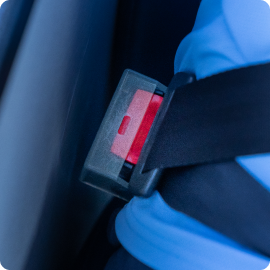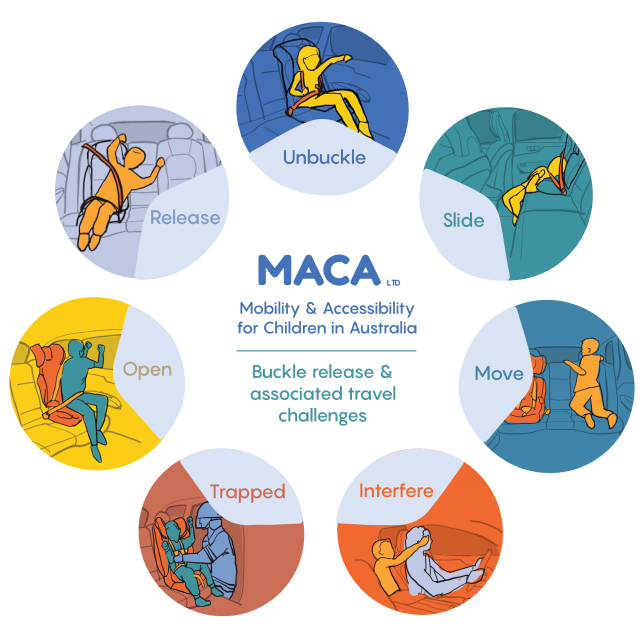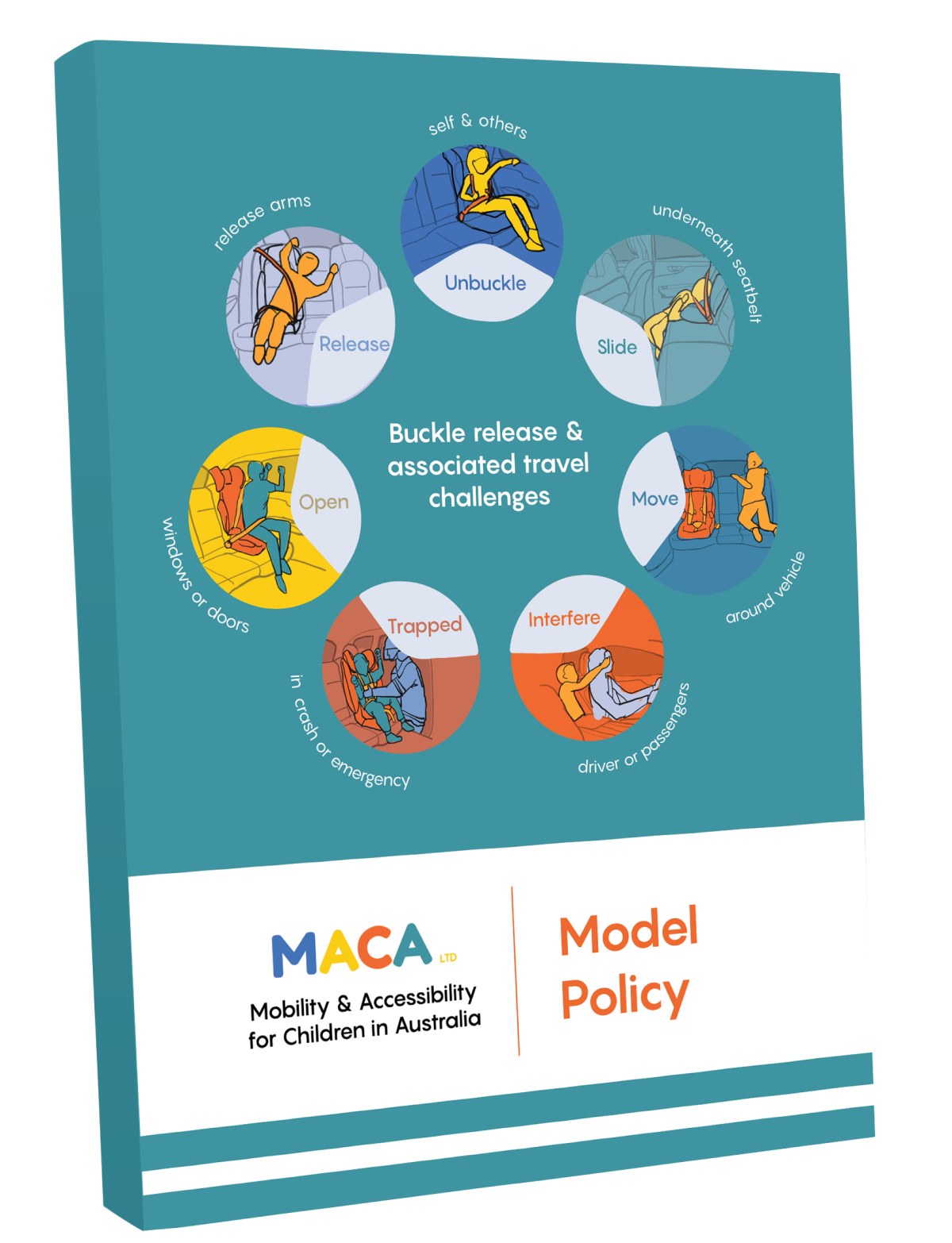Is it legal to use a buckle cover?
A blog exploring the legal and safe use of buckle covers

Introduction
Buckle covers are often used when a child with disability or challenging behaviours habitually escapes their child restraint or seatbelt. But are they legal in Australia?
The answer is complex.
Research shows a significant number of children try to escape their child restraint or seatbelt – in fact, an alarming 74 per cent of children with autism escape their child restraint when travelling in the car.
This might involve unbuckling their seatbelt, sliding under the seatbelt, or taking their arms out of a restraint harness – which causes serious road safety risks for the child, their family and other road users.

Types of buckle covers
There are two types of buckle covers which aim to prevent this behaviour:
- Child restraint buckle cover: an accessory product placed over the top of the buckle release on the built-in harness of a child restraint.
- Seatbelt buckle cover: an accessory product placed over the top of the vehicle seatbelt buckle to prevent the occupant from accessing the seatbelt’s release button.

World first research project
Despite the obvious need for buckle covers, and the fact they are often prescribed in cases like we’ve described, there is a lack of research and knowledge about their safety, features, and use.
It’s why MACA partnered with La Trobe University to undertake a world-first project to better understand the challenges of buckle release – and to inspire vehicle manufacturers and innovators to develop better solutions.
With funding from the Federal Government’s Road Safety Innovation Fund, we assessed buckle covers against the relevant Australian Standard, reviewed state and territory legislation, and consulted a diverse group of stakeholders.

Project findings
We found that, despite the real world need for buckle cover products, none comply with Australian standards (despite some manufacturers claiming they do), and they are of variable quality.
In fact, some products may introduce additional risks – such as the difficulty of quickly unbuckling the child from the vehicle in the event of an emergency or crash.
And there are significant differences in state and territory requirements for the legal use of both child restraint and seatbelt buckle covers, and in some instances the legal requirements are unclear.

Buckle Cover Model Policy
So, given all of this, should we be using buckle covers?
MACA has developed a Buckle Cover Model Policy to assist allied health professionals in supporting families in this area.
This includes ensuring parents are informed of the potential for unintended consequences, the legal requirements for use, and ways to increase support and strategies for the child and family if needed.
Whilst we acknowledge that there’s a real need for buckle covers to help prevent children from getting out of their car restraint or seatbelt during travel, there are safety considerations to be aware of.

Challenges
Many buckle covers need a key or other device to undo them.
In the event of a crash or emergency, this could prevent the child from being quickly and easily released from the vehicle.
Some buckle covers are supplied with a seatbelt cutter which is recommended by the manufacturers to be always kept in the vehicle when the child is using the buckle cover. In an emergency the child can be released by cutting the seatbelt or child restraint webbing.
Our model policy recommends that a seatbelt cutter be kept in each vehicle the child travels in (these are low cost and available online), and that parents and other persons transporting the child are educated in what to do in an emergency.
In some cases, using a buckle cover encourages the child to find another way to get out of the restraint.
For example, when a buckle cover is used on the seatbelt, children find that they can lift the sash and/or lap parts of the seatbelt away from their body and slip out from under the lap part of the seatbelt. This is a significant road safety risk.

Laws
MACA works closely with state and territory transport agencies and the National Transport Commission to ensure the laws in each state and territory are clear, and do not present barriers to supporting the safe transport of children. This is resulting in changes to legislation and increased awareness of transport agencies of the significant road safety challenges associated with children unbuckling their child restraint or seatbelt during travel.
We have templates on our website that can assist allied health professionals with supporting families to comply with state or territory legal requirements. We regularly update the templates as states and territories make the necessary amendments to their legislation.

Conclusion
What is clear is that right now, the rights of children with disability to safe transport are not being met equal to children without disability.
MACA is calling on industry to develop products that comply with Australian standards, that enable quick release of children in the event of an emergency or crash, and for these products to be evaluated for their effectiveness.




